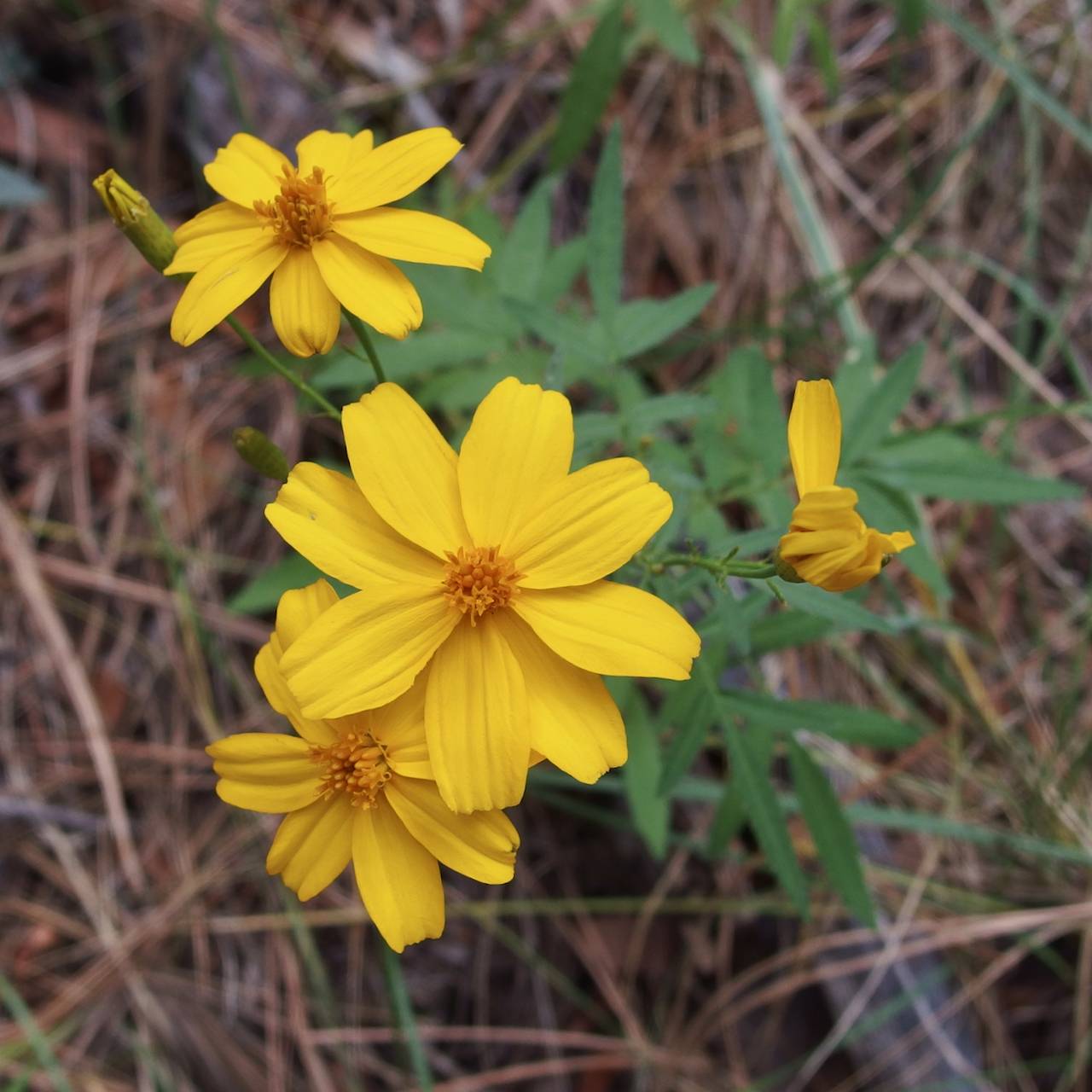Tagetes
|
Family: Asteraceae |
Annuals, perennials, subshrubs, or shrubs [perennials], mostly 10-80(-200) cm. Stems erect, branched distally or ± throughout. Leaves cauline; mostly opposite (distal sometimes alternate); petiolate or sessile; blades mostly lanceolate to oblanceolate overall, usually 1-3-pinnately lobed or -pinnatisect, ultimate margins toothed or entire, faces glabrous or hairy (oil-glands scattered and/or submarginal). Heads radiate or discoid, borne singly or in ± corymbiform arrays. Calyculi 0. Involucres narrowly cylindric or fusiform to turbinate or broadly campanulate, 1-12+ mm diam. Phyllaries persistent, 3-21+ in 1-2 series (connate to 7/8+ their lengths, usually streaked and/or dotted with oil-glands). Receptacles convex to conic, smooth or finely pitted, epaleate. Ray florets 0 or 1-8(-13+; to 100+ in 'double' cultivars), pistillate, fertile (except 'double' cultivars); corollas yellow or orange, red-brown (with or without yellow/orange), or white. Disc florets 6-120+, bisexual, fertile; corollas greenish yellow to orange, sometimes tipped with red or red-brown, tubes much longer than or about equaling funnelform throats, lobes 5, deltate to lance-linear (equal or 2 sinuses deeper than others). Cypselae narrowly obpyramidal or fusiform-terete, sometimes weakly flattened, glabrous or hairy; pappi persistent, of 2-5(-10 dissimilar, distinct or connate scales in ± 1 series: 0-5+ oblong to lanceolate, erose-truncate or laciniate plus 0-2(-5) longer, subulate to aristate. x = 12. Some Tagetes species (e.g., T. erecta) produce nematicidal thiophenes in their roots and have been shown to be effective controls for nematodes in diverse crops (cf., http://www.ncagr.com/agronomi/nnote1.htm). Reports of 'Tagetes minima L.' for Pennsylvania (cf. http://plants.usda.gov) are evidently rooted in an error for T. minuta. Report of T. pusilla Kunth (= T. filifolia Lagasca) for Maryland (http://plants.usda.gov) was not verified for this treatment.
Heads mostly radiate, the rays few (except in double forms), pistillate and fertile, mostly yellow to red-orange; invol bracts uniseriate, 3-10, united to near the apex and each with a row of evident embedded oil-glands on each side; receptacle flat, generally small, naked; disk-fls tubular and perfect; style-branches ±elongate, flattened, with introrsely marginal stigmatic lines and a short, often expanded, hirsutulous appendage; achenes slender and elongate; pappus of several very unequal, often ±connate scales, generally 1 or 2 elongate and acute or awn-tipped; glabrous, aromatic herbs with conspicuously gland-dotted, usually pinnatifid lvs, at least the lower opposite. 30, warm New World. Gleason, Henry A. & Cronquist, Arthur J. 1991. Manual of vascular plants of northeastern United States and adjacent Canada. lxxv + 910 pp. ©The New York Botanical Garden. All rights reserved. Used by permission. |

